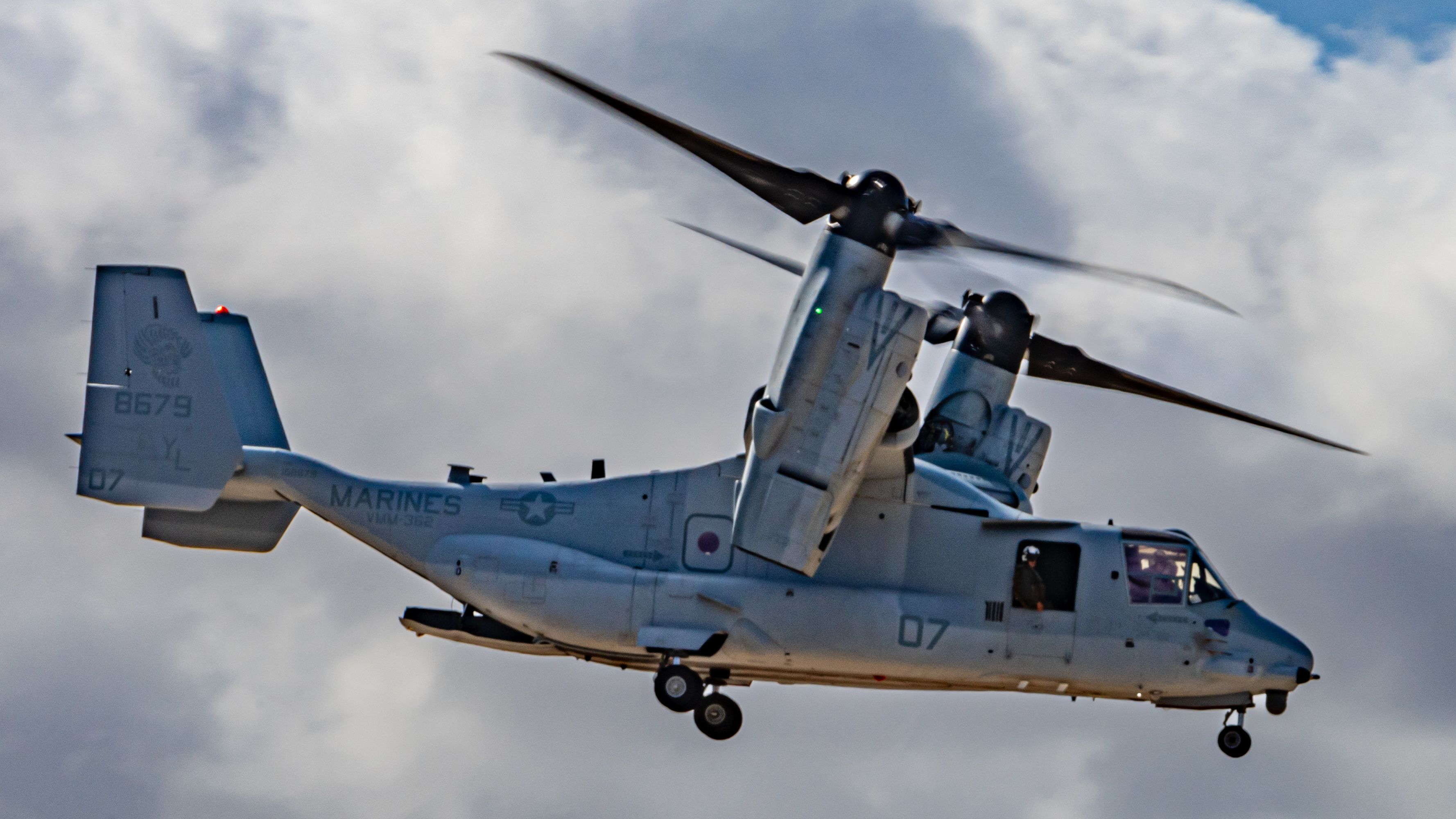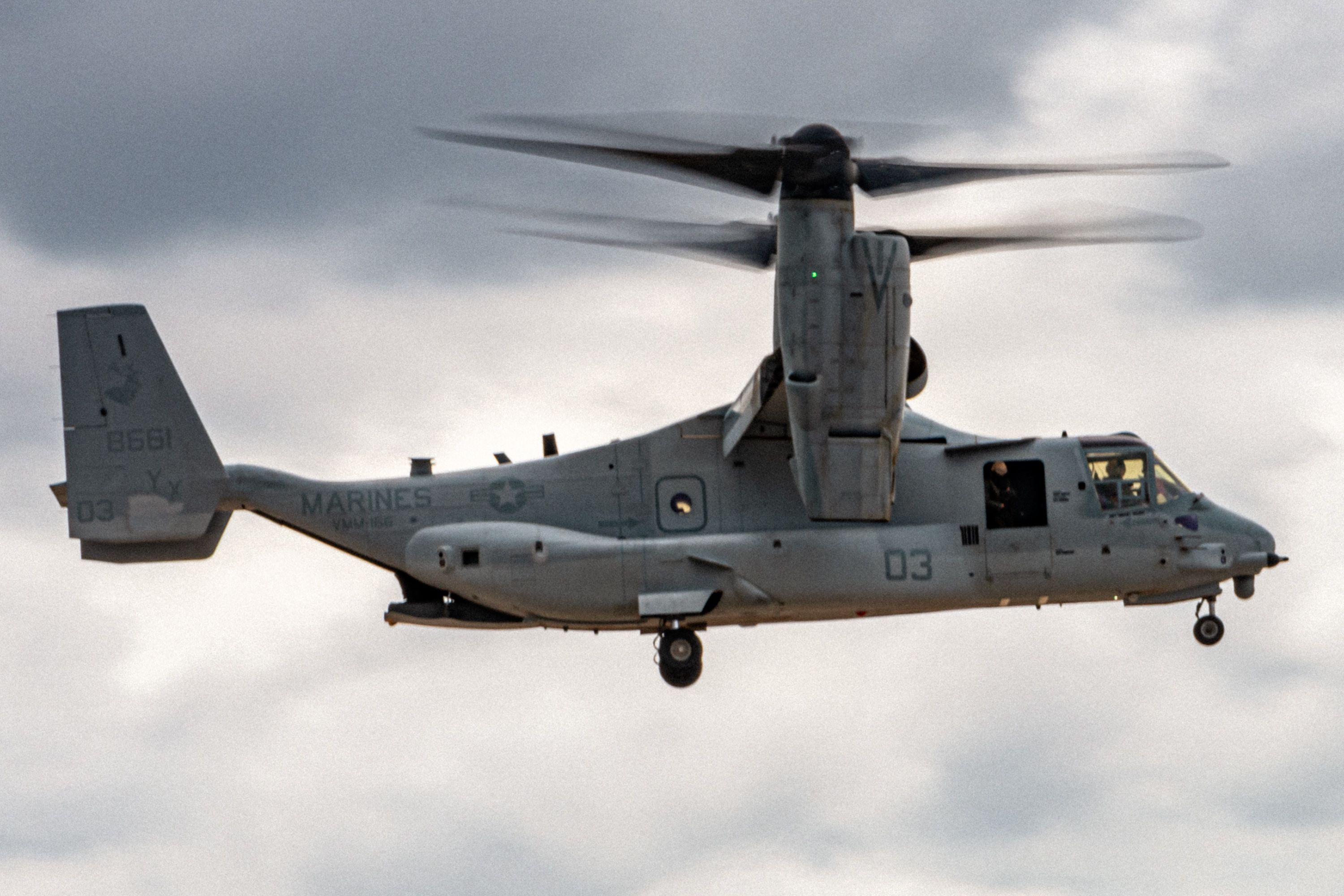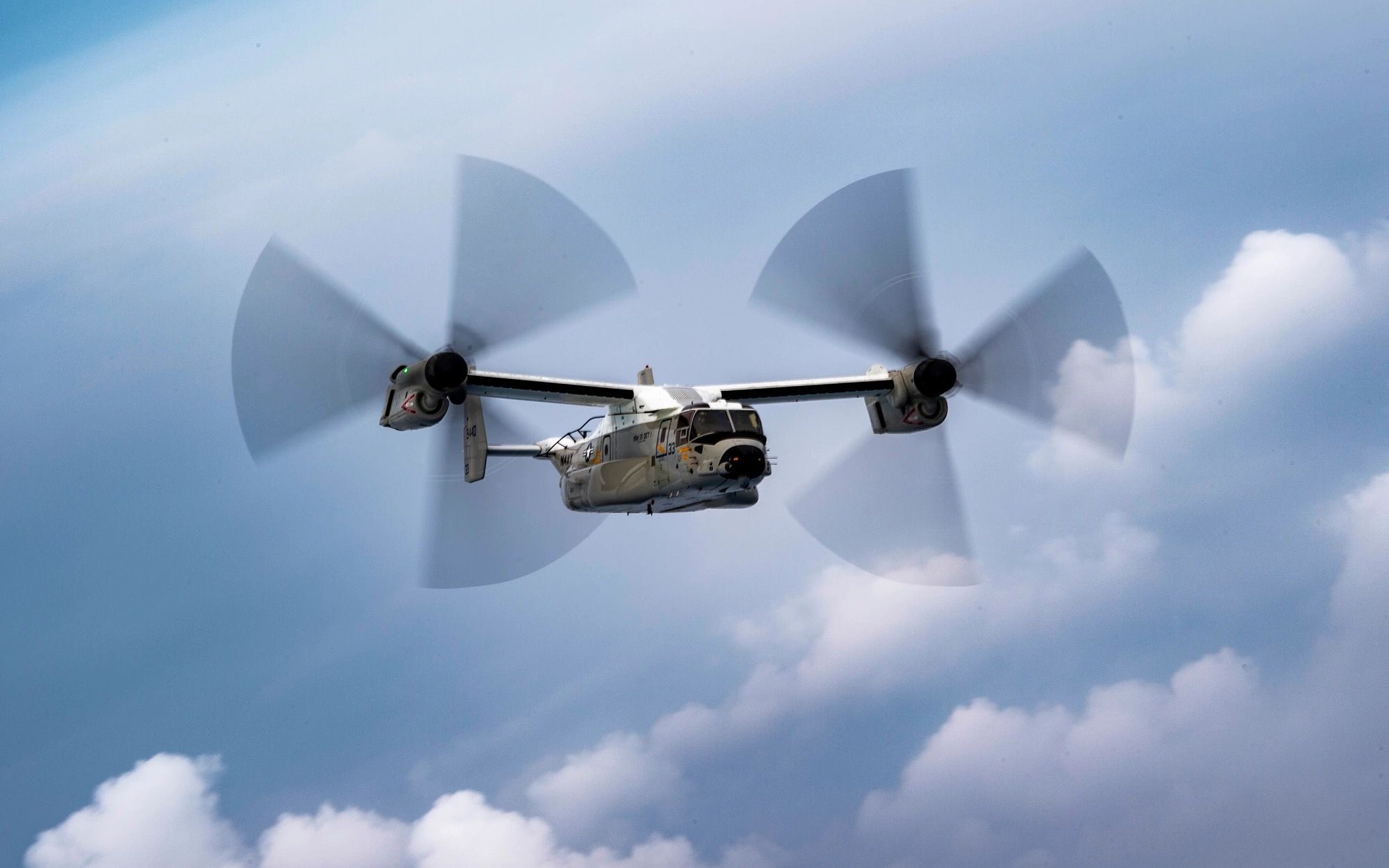Summary
- The V-22 Osprey tiltrotor has been grounded worldwide, and it’s not the first time.
- The safety standdown by the US Navy and Marine Corps is a precautionary measure to ensure the safety of service members.
- Previous safety stand-downs have been a result of issues with hydraulic systems and build defects.
Following the recent crash of a V-22 Osprey off the coast of Japan, which claimed the lives of eight Air Force Special Operations Command service members, the type was grounded around the world. With preliminary findings indicating a ‘material failure’ rather than human error, the question has to be asked: is the MV-22 Osprey grounded for good? It’s not the first time the aircraft has been grounded, and it has bounced back before…
A new platform with new mechanics
The V-22 Osprey is the world’s first mass-produced tiltrotor. A tiltrotor is an aircraft whose prop-rotors are in the vertical position for take-off and then rotate forward for cruise and rotate backward for landing. One can read more below:

When Two Worlds Collide: What Are Tiltrotor Aircraft?
Is it a plane? Is it a helicopter? No, it’s something entirely different.
Additionally, a former Public Affairs Officer for the V-22 program in 2002-2005 and before that, a US naval aviator (F-14 Tomcat Radar Intercept Officer/RIO) turned YouTube star publisher Ward “Mooch” Carroll put together a report:
As Carroll explains, the program required learning new, safer ways of flying the V-22 within “the laws of physics.” Carroll also shares some V-22 history.
Why the global standdown?
NAVAIR – the US Naval Air Systems Command – is responsible for the US Navy and US Marine Corps’ CMV-22B and MV-22 transports. Following the accident at the end of November, NAVAIR released the following statement regarding the grounding:
“Out of an abundance of caution, following the AFSOC operational stand down, NAVAIR is instituting a grounding bulletin for all V-22 Osprey variants Dec. 6. This decision comes after the V-22 Osprey mishap on Nov. 29, off the shore of Yakushima, Japan.
“Preliminary investigation information indicates a potential materiel failure caused the mishap, but the underlying cause of the failure is unknown at this time. While the mishap remains under investigation, we are implementing additional risk mitigation controls to ensure the safety of our service members.”
The idea that this was a ‘material failure’ suggests that, from preliminary findings at least, the cause of the accident was considered to be the fault of the aircraft and not the crew. According to a December 7 Associated Press report, the V-22’s clutch has been a problem for about a decade and is suspected to be the primary cause, although investigations are ongoing.
It was the second fatal crash this year, after an MV-22B belonging to 1st Marine Aircraft Wing crashed on Melville Island in Australia in August. Twenty-three marines were onboard at the time, although thankfully, all but three escaped with their lives. Since its introduction in 2007, more than 40 accidents have been recorded, resulting in more than 30 fatalities, 20 of which occurred in the last two years.
The US grounding of the type affected much of the worldwide fleet, with some 400 in operation with the US Marine Corps, 51 with Air Force Special Operations Command, and 27 with the US Navy, according to PBS. Japan’s Ground Self-Defense Force, or JASDF, operates the only other Ospreys in the world, with a fleet of 14. It also grounded its aircraft after the crash, which is awkward given that the government is in the midst of constructing a new base for the Osprey fleet at Saga Airport in western Japan.
| Operator | On Hand | Ordered | Variant |
| Japanese Ground Self-Defense Forces | 14 | 3 | MV-22 |
| US Air Force | 52 | 2 | CV-22 |
| US Marine Corps | 288 | 13+20* | MV-22 |
| US Navy | 27 | 34 | CMV-22B |
*Options for additional orders
.
Photo: Joe Kunzler | Simple Flying
Some of the accidents and incidents involving the Osprey have been attributed to hydraulic leaks, clutch issues, and hard landings, but a large number have been ruled to have been operator error. Last time it was grounded, which was only in Japan, the eventual outcome was that the mishap was down to a fuel line coming into contact with the rotors during inflight refueling. It bounced back from that – can it do so again?
Can anything else fill the role of the Osprey?
The Osprey has had tragic incidents before, but military aircraft are not held to the same standards regarding safety as commercial airliners. Furthermore, the V-22 Osprey family is an innovative transport at the cutting edge of aviation innovation. According to The Marine Times, the accident rate for the Osprey is 3.16 per 100,000 hours, which is barely higher than the total US Marine Corps aviation platform average of 3.1 per 100,000 flight hours, which puts things in perspective.
Photo: Boeing
New platforms come with new problems, and while the operators of the Osprey will be keen to identify and mitigate the root cause of the tragedy in Japan, it’s unlikely we’re watching the end of the type’s proliferation in the US forces. One reason for that is the unique and valuable role the V-22 fills, which other aircraft options find hard to match. For example:
- Foldable rotors: The wings fold into a 63-foot, 18-foot by 18-foot configuration, which takes up less space on an aircraft carrier.
- Heavy lift capabilities: The Osprey can carry 24 combat troops or 20,000 pounds of internal cargo, or 15,000 pounds externally.
- Versatility: Can be used for all sorts of missions, including long-range infiltration, exfiltration, medium-range assault, special operations, VIP transport, resupply, disaster relief, search-and-rescue, medical evacuation, and humanitarian missions.
- Rapid deployment: With a top speed of 305 kn (565 km/h; 351 mph) at 15,000 ft, it’s nearly twice as fast as most average helicopters
Nonetheless, the loss of human life in pursuing aviation excellence is always hard to accept. However, as several naval aviators have shared with the author, NAVAIR’s manuals called NATOPS or Naval Air Training and Operating Procedures Standardization (NATOPS) are written in blood.
What is your assessment? Please share with civility in the comments.





